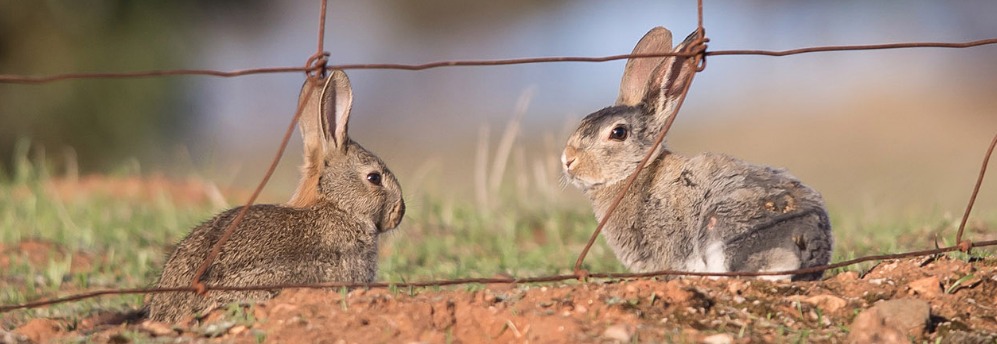
RABBITS and hares are less of a problem on Australia’s agricultural land according to managers survey in the latest ABARES Pest Animal and Weed Management Survey results released today.
The largest decrease in pest problems between surveys in 2016 and 2019 was in the proportion of land managers reporting major or minor problems with rabbits/hares and this was down 6.9 percentage points.
However, more than half of agricultural land managers in Australia are still reporting native animals and birds, rabbits/hares, rodents and foxes have caused either minor or major problems on their properties in the 12 months prior to the 2019 pest animal survey, as was the case in 2016.
The ABARES Pest Animal and Weed Management Survey 2016-2019 also found that the proportion of managers reporting a major overall feral animal problem on their property had not changed significantly between surveys – 21 percent in 2016 and 20pc 2019.
There was a statistically significant decrease by 13 percentage points in those reporting a minor feral animal problem between surveys.
However the latest ABARES report confirms that Australia’s farmers are spending significant amounts of time and money on battling pests and weeds.
ABARES acting executive director, Dr Jared Greenville, said the survey results demonstrated that land management in Australia was an ongoing job.
“We surveyed 6470 farmers in 2016, and 8059 in 2019 and they responded from across Australia.
“The biggest change we saw was a 41 percent increase between 2016 and 2019 in farmers reporting crop loss, degradation or loss of value from pests, particularly insects,” he said.
“The impact of pest animals, particularly invertebrates, has increased between surveys, even considering the vastly different weather patterns between 2016 and 2019.
“However, the proportion of land managers reporting expenditure on managing pests and weeds went down between 2016 and 2019, and the average amount farmers spent on pest and weed management nearly halved from $20,405 in 2016 to $11,576 in 2019,” Dr Greenville said.
“This is mostly accounted for by the change in average weed expenditure which dropped from $18,633 in 2016 to $10,551 in 2019. Widespread drought in 2019 is likely to be a factor in the reduced spend on weed management.
“We do have to take into account the fact that 2016 had substantially high rainfall, while 2019 was a drought year. These factors affect the impact, numbers and distribution of pest animals and weeds.”
Pest Animal and Weed Management Survey 2016-2019: Land manager survey results are available by clicking here or on the ABARES website.

Weed science is an interesting subject and I believe poorly understood. I was fortunate to have the late Nelson Johnson as my weed science lecturer back in 1971. The definition that he gave of a weed was “a plant growing in place”. In other words, plants grow in conditions that suit them, so if we are going to remove a plant we have to change the growing conditions of soil and or competition. The classic case is thistles, following the introduction of sub clover and superphosphate. Nitrogen builds up and thistles love nitrogen, so a cropping rotation was introduced to utilise nitrogen and in doing so, in conjunction with 24D, controlled thistles. A simple example, but the point is plants grow where conditions are suitable.
A definition of a pest or weed is a plant or animal that is in not in its correct environment or location and is out of control. For example, ragwort is a cherished plant in Ireland, in Australia it is a noxious weed.
Crown lands, everything from national parks to roadside reserves are the source of infestation of a multitude of weeds and animals into the environment. Rabbits, foxes, wild dogs, pigs, deer, camels, brumbies and yes, kangaroos. Kangaroos meet the criteria of being in plague proportions and for their own well-being require a national cull.
Uniformed local government employees as they move around plant and machinery as part of their job, can unwittingly spread every weed imaginable. Often, once the weeds get a go on they are impossible to contain. We need a massive investment into weeds and pests in our environment.
Just because a plant is green doesn’t mean it’s not a weed not in danger of spreading. Everything should be aimed at education, to engage people and effect control. The indigenous peoples are ideal for this, as the Australian countryside had never looked as well as it did prior to the arrival of Captain Cook.